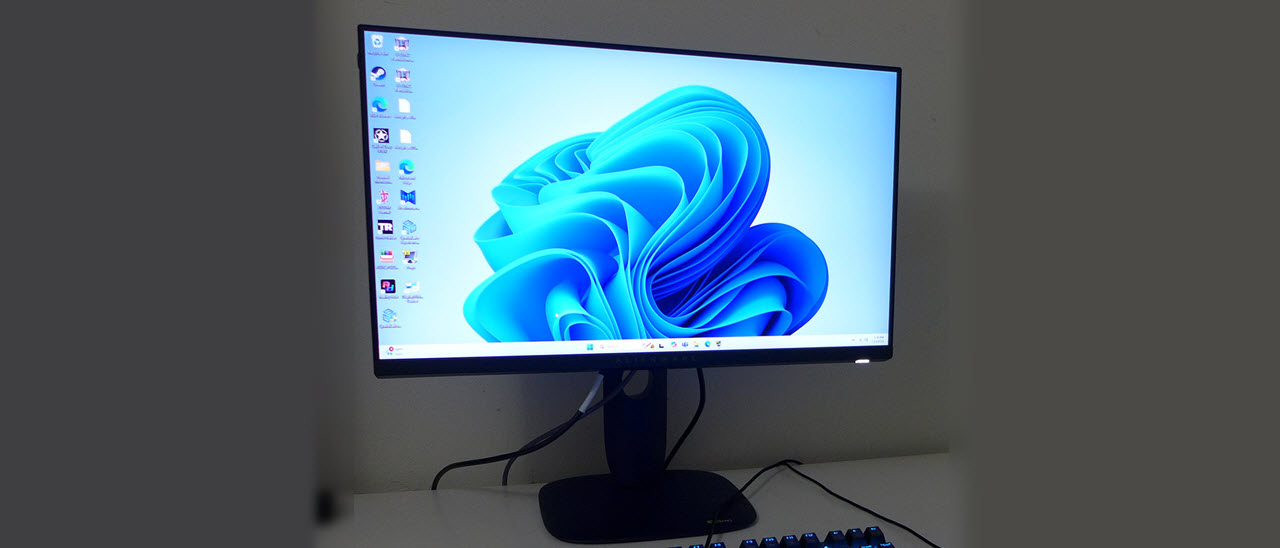Why you can trust Tom's Hardware
I started my color tests in the AW2525HM’s Standard picture mode and found that it was just on the edge of needing calibration. Most users will be satisfied to use the monitor unadjusted. In the Custom Color mode, it’s possible to achieve very accurate results for all color benchmarks.
Grayscale and Gamma Tracking
Our grayscale and gamma tests use Calman calibration software from Portrait Displays. We describe our grayscale and gamma tests in detail here.
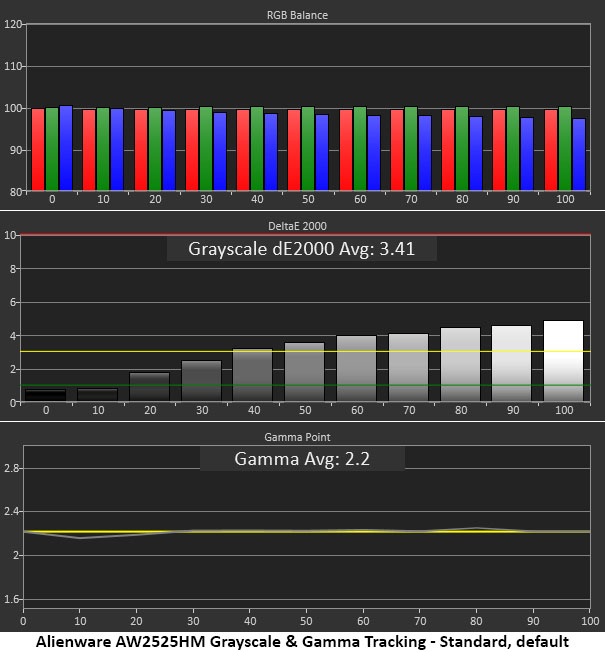

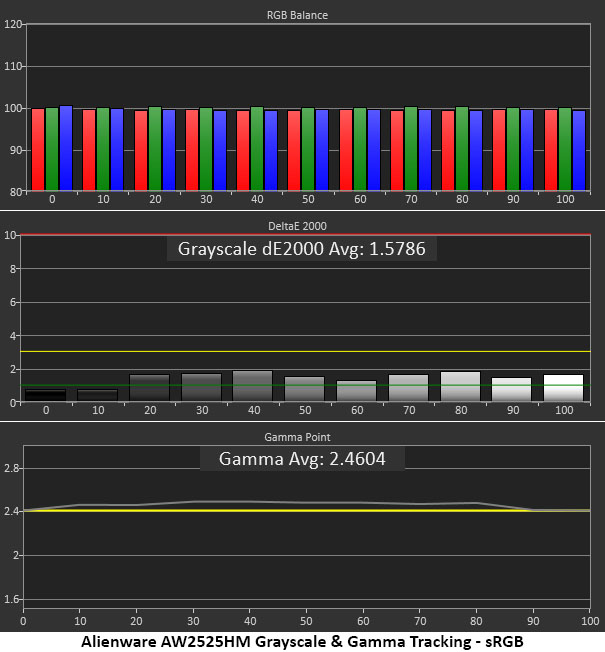
In the AW2525HM’s first grayscale/gamma chart, you can see a slightly warm tone rising from 40% brightness up to the peak level. This error is minor because green and red are in balance; neither color dominates. All that’s needed is a bit more blue. Gamma tracks perfectly on the 2.2 reference line with no anomalies visible in content.
Calibrating the Custom Color mode delivers perfection with all errors now below 1dE. That is reference-level performance. Gamma now says 2.19 average, but that change is so minuscule that it’s barely visible on the chart, much less in practice. It doesn’t get better than this, even from a pro display.
The sRGB mode is based on a higher 2.4 gamma reference and the AW2525HM is slightly darker than that. Grayscale errors are invisible, so this issue is extremely minor. The monitor is qualified for grading work, but as you’ll see below, the sRGB gamut is slightly undersaturated.
Comparisons
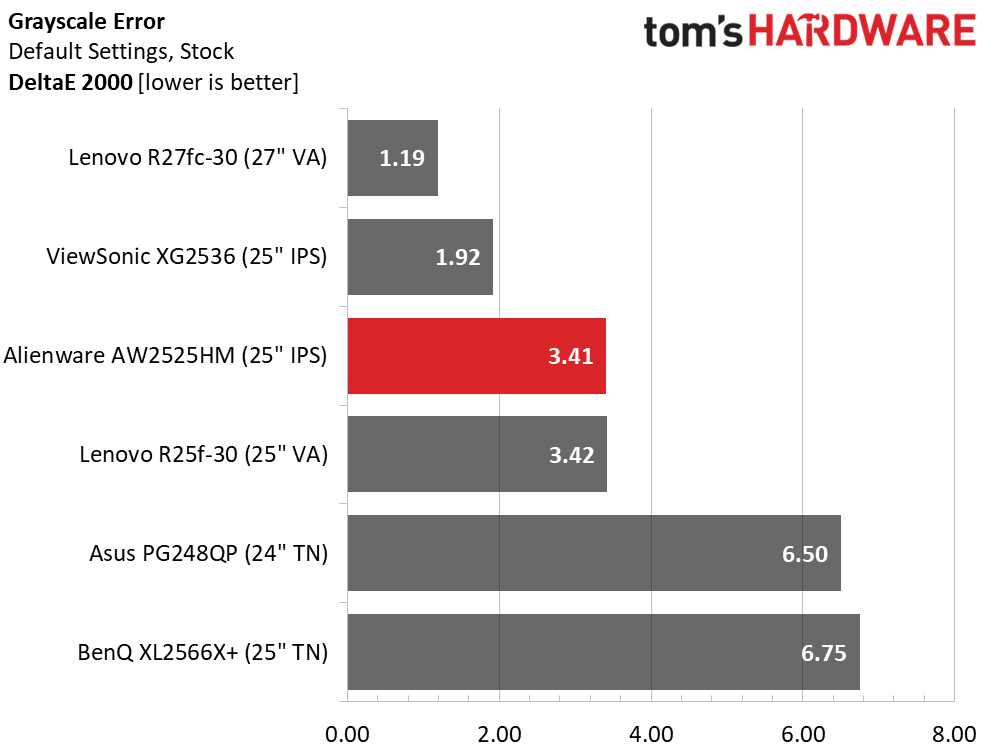
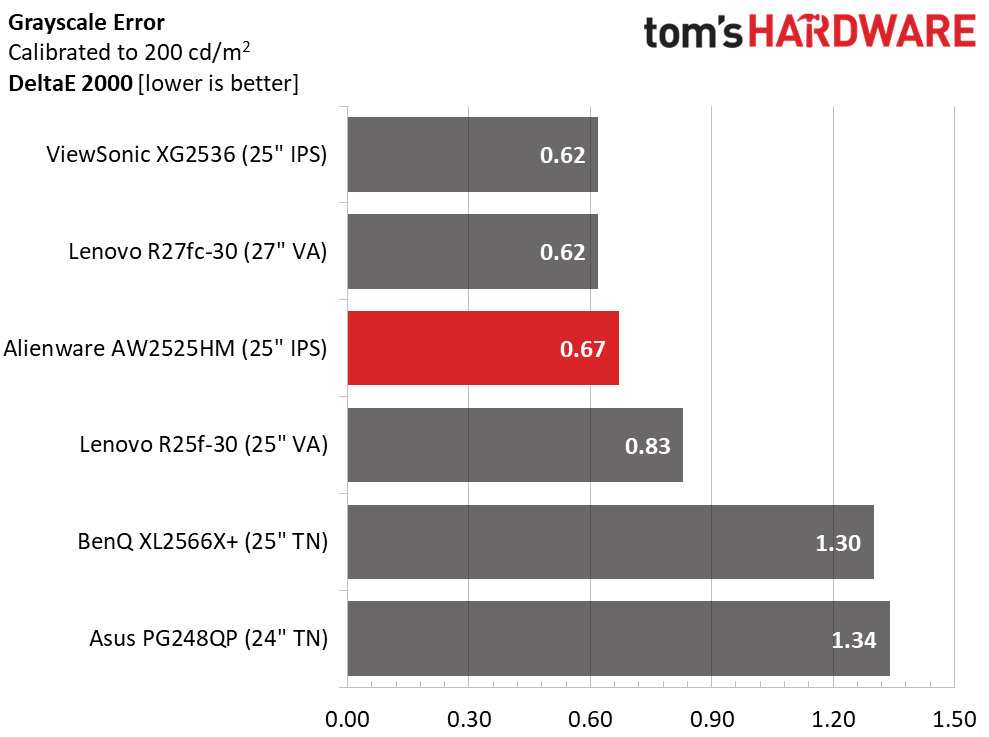

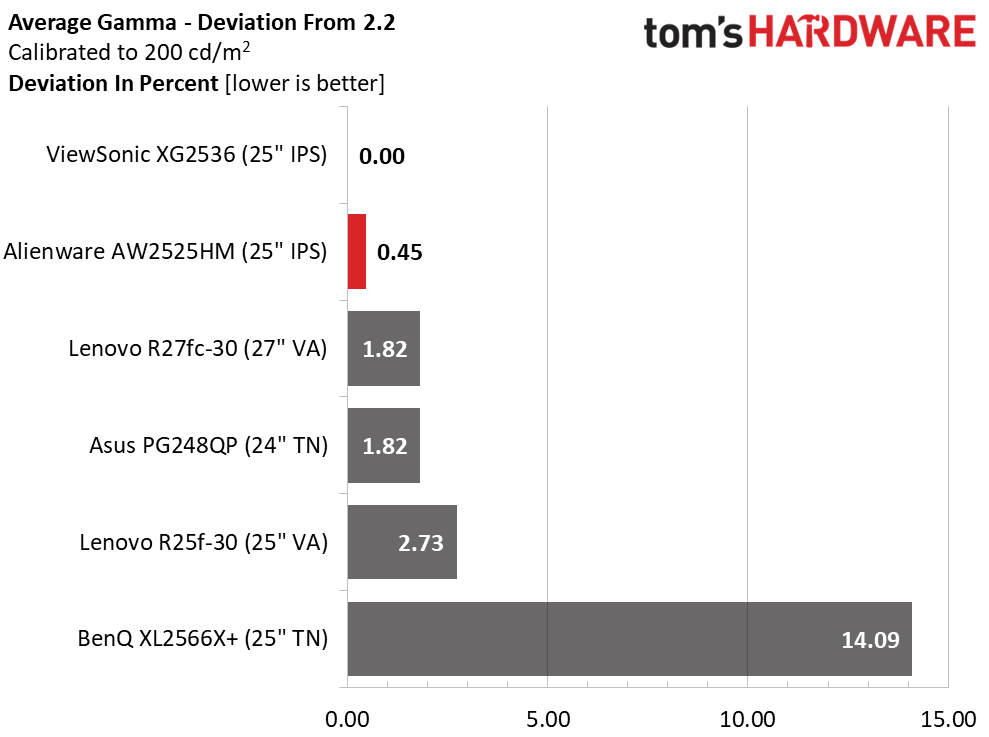
The AW2525HM’s 3.41dE default grayscale value is borderline for calibration. Since the errors create a warm tone, they are more forgivable than a blue or green push, which is easier to spot in content. But with such precision available from calibration, it’s logical to do so. If you use sRGB, it lacks adjustments but runs a solid 1.58dE grayscale error and gamma that’s close to the intended 2.4 value.
Gamma tracking is about as good as it gets with top scores for value range and deviation. A 0.07 gap between low and high numbers is super tight and the 2.19 average means it’s just 0.45% off the reference, which is an excellent result.
Get Tom's Hardware's best news and in-depth reviews, straight to your inbox.
Color Gamut Accuracy
Our color gamut and volume testing use Portrait Displays’ Calman software. For details on our color gamut testing and volume calculations, click here.
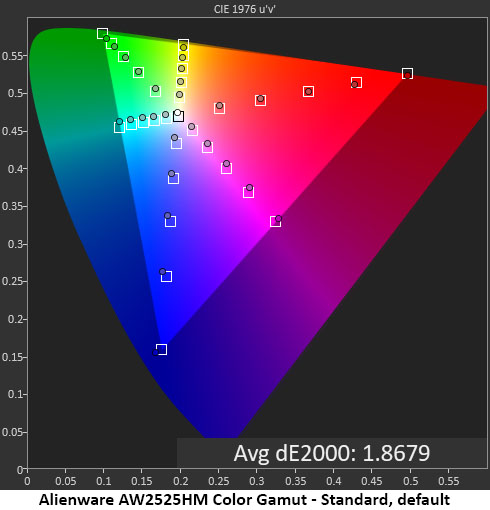
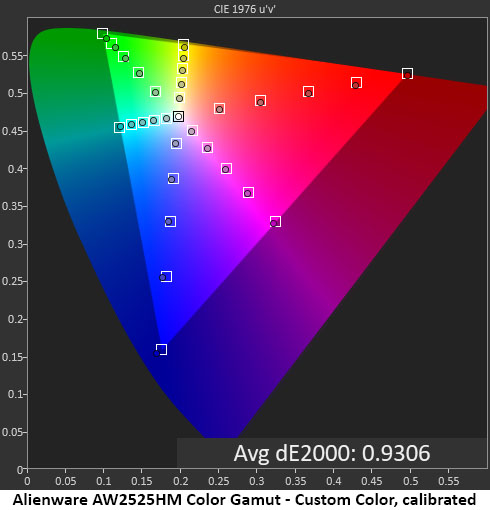
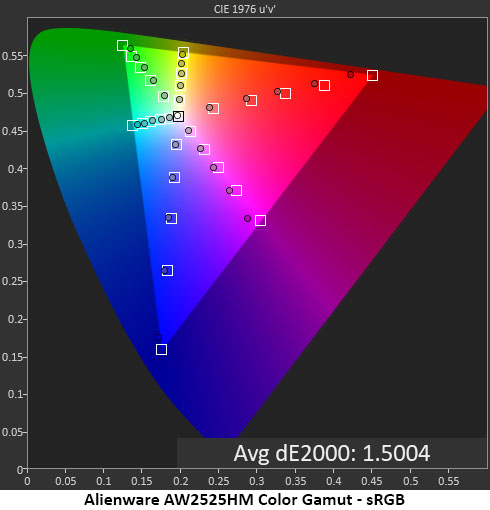
I was impressed by the AW2525HM’s color coverage. No FHD screens in my experience cover as much of the DCI-P3 gamut as this one. Only green comes up slightly short. All points are on or near their targets with just the slightest hue errors in cyan and magenta. With an average of just 1.87dE, you won’t see any issues.
Calibration takes the AW2525HM below the difficult-to-achieve 1dE threshold. Only a few monitors can manage this. Remember that it is the average value of 36 measurements. This is on par with the best professional displays.
The sRGB test result was a bit disappointing as it shows clear undersaturation in red, magenta and green. The AW2525HM certainly has enough color to cover 100% of sRGB. I would still call it qualified for critical applications, but just barely.
Comparisons
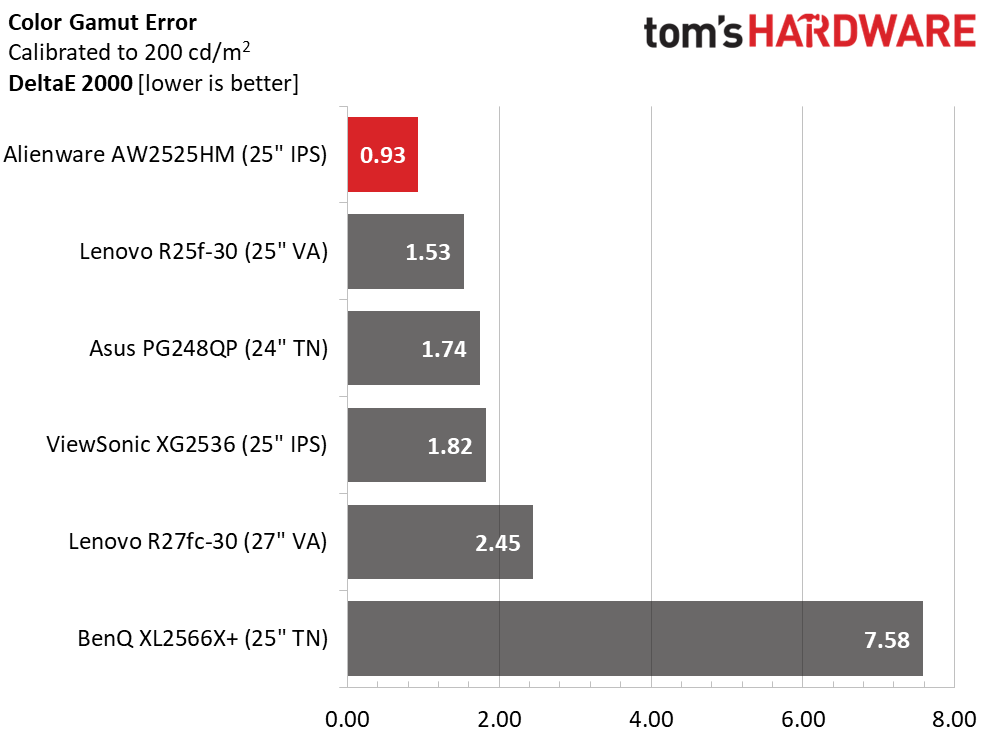
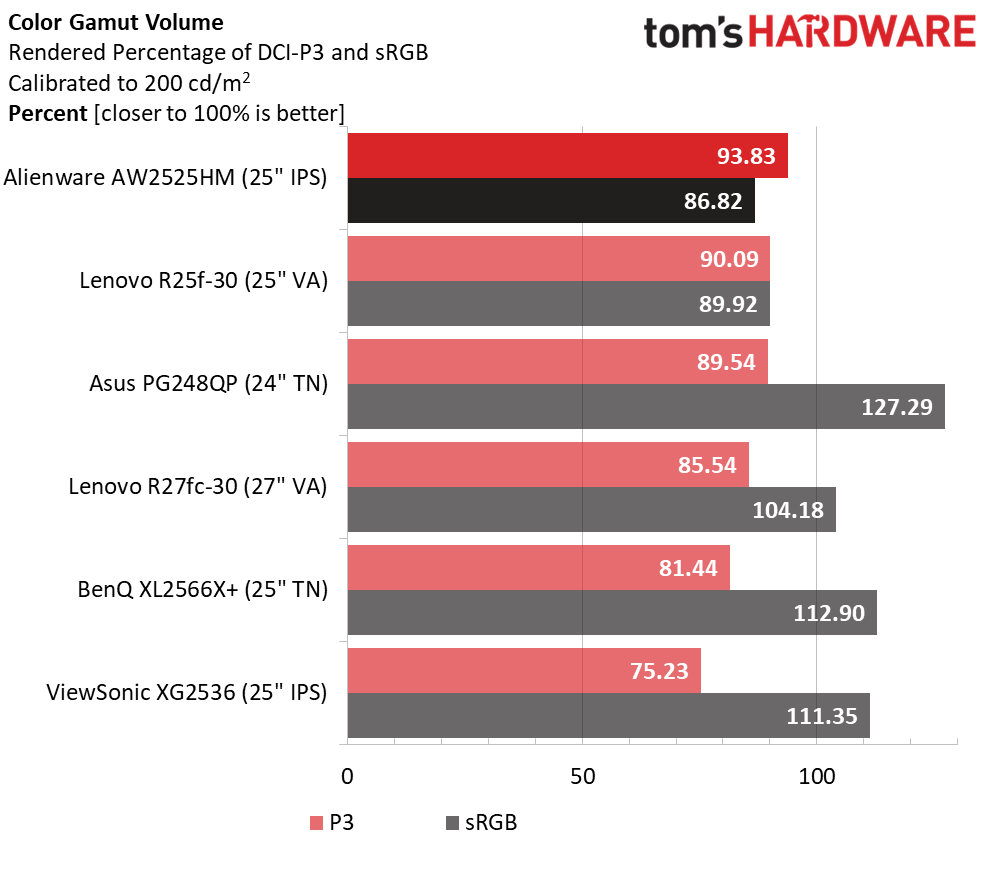
The AW2525HM wins the color accuracy contest for DCI-P3 with a 0.93dE score. It’s one of the few monitors that has cracked 1dE in my test. The next four screens aren’t far behind, but the BenQ is out of the mix at over 7dE.
The coverage test is where the AW2525HM really shines. You won’t find Quantum Dot color in the FHD gaming monitor category, but Alienware has achieved significantly more color than its rivals. The extra coverage is in red and green, meaning the picture is visibly more saturated and vibrant. It’s a great enhancement for gaming that adds to the AW2525HM’s already exemplary performance. The sRGB gamut comes up short of the mark with 86.82% coverage. For gaming, this isn’t an issue, but if you really need sRGB, there are monitors that do it better like the Lenovo R27fc-30.
Test Takeaway: The AW2525HM offers excellent color, grayscale and gamma accuracy that competes with professional screens after calibration. It has a greater DCI-P3 gamut volume than all its competitors, translating to more vibrant and enjoyable gaming.
MORE: Best Gaming Monitors
MORE: How We Test PC Monitors
MORE: How to Buy a PC Monitor
Current page: Grayscale, Gamma and Color
Prev Page Brightness and Contrast Next Page HDR Performance
Christian Eberle is a Contributing Editor for Tom's Hardware US. He's a veteran reviewer of A/V equipment, specializing in monitors. Christian began his obsession with tech when he built his first PC in 1991, a 286 running DOS 3.0 at a blazing 12MHz. In 2006, he undertook training from the Imaging Science Foundation in video calibration and testing and thus started a passion for precise imaging that persists to this day. He is also a professional musician with a degree from the New England Conservatory as a classical bassoonist which he used to good effect as a performer with the West Point Army Band from 1987 to 2013. He enjoys watching movies and listening to high-end audio in his custom-built home theater and can be seen riding trails near his home on a race-ready ICE VTX recumbent trike. Christian enjoys the endless summer in Florida where he lives with his wife and Chihuahua and plays with orchestras around the state.
-
LabRat 891 Reply
Maybe not 2010, but this does feel a bit regressive. I used to run a 32" 1080p 144hz curved VA and I don't think I could ever go back to 1080p. -Sometimes, I do think about downgrading to a 1440p panel, though.cknobman said:1080p IPS Edge lit and only 25'?
Is this 2010? -
cknobman Reply
For sure.LabRat 891 said:Maybe not 2010, but this does feel a bit regressive. I used to run a 32" 1080p 144hz curved VA and I don't think I could ever go back to 1080p. -Sometimes, I do think about downgrading to a 1440p panel, though.
I settled on 1440p because it was just a great blend of resolution and performance.
Im just not willing to spend $$$$$ to get great 4k framerates.
